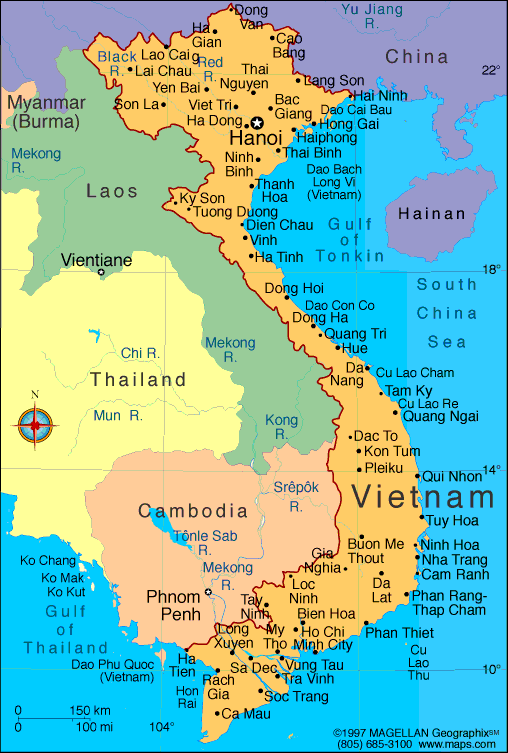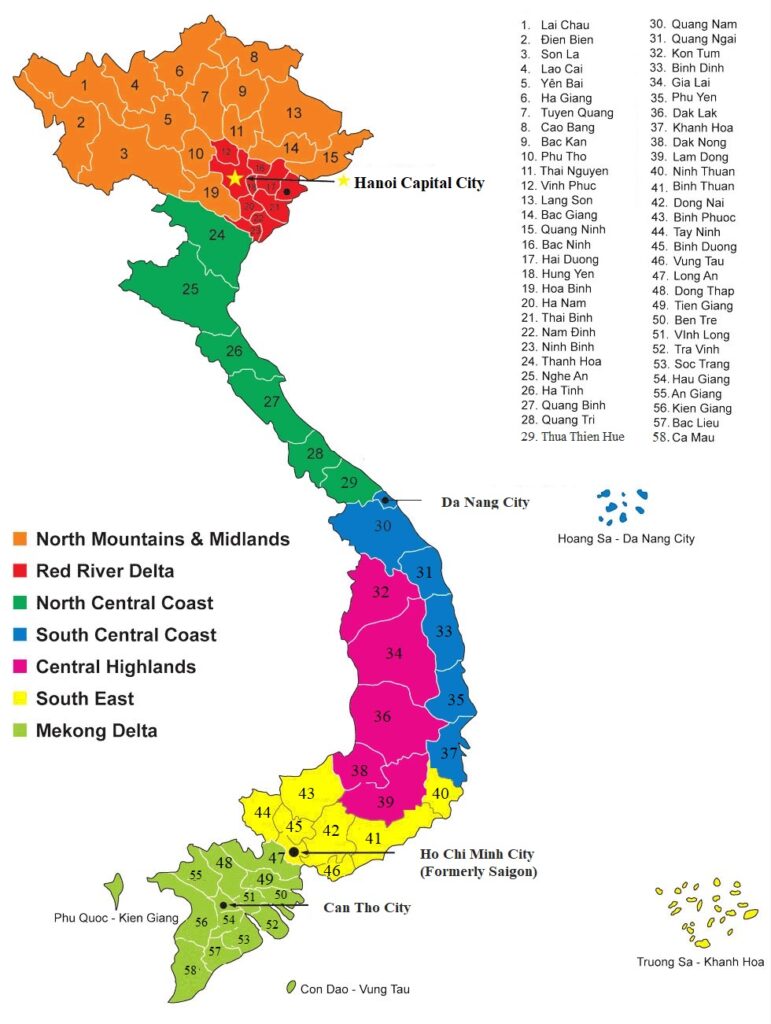Exploring the Intricacies of the Vietnam Map

Introduction to the Vietnam Map
Vietnam Map is more than just a representation of geographic boundaries—it’s a portal to understanding the country’s diverse landscapes, rich culture, and deep history. From its iconic S-shaped outline to the intricate details of its provinces and cities, the map of Vietnam Map is a treasure trove of information for travelers, historians, and geography enthusiasts alike.
Vietnam Map, located in Southeast Asia, boasts a unique blend of mountains, rivers, coastal plains, and urban centers. Its map not only guides visitors but also tells a story of a nation shaped by its natural features and historical events. Understanding the Vietnam map allows us to appreciate the complexity of its regions and the people who call this land home.
The Geographic Layout of Vietnam
The Iconic S-Shaped Country
Vietnam’s map is instantly recognizable for its distinct S-shape, stretching along the eastern coast of the Indochinese Peninsula. This shape is not just visually striking but also reflects the diverse topography of the country. From the rugged mountains in the north to the lush deltas in the south, the map captures the essence of Vietnam’s natural beauty.
The narrow central region, often referred to as the “waist” of the country, connects the expansive Red River Delta in the north with the fertile Mekong Delta in the south. This unique geographical layout influences everything from climate patterns to cultural practices, making the map an essential tool for understanding Vietnam’s complexity.
Mountains, Rivers, and Coastal Lines
A closer look at the Vietnam map reveals an intricate web of mountains, rivers, and coastal lines. The northern region is dominated by the Annamite Mountains, which serve as a natural border with Laos and provide breathtaking landscapes. The central highlands, marked on the map, are a haven for agriculture and biodiversity.
Rivers play a vital role in Vietnam’s geography. The Red River in the north and the Mekong River in the south are visible on the map, shaping the livelihoods of millions. These rivers are the lifeblood of Vietnam, supporting agriculture, trade, and transportation. The country’s extensive coastline, as depicted on the map, highlights its strategic importance for fishing, tourism, and commerce.
Major Cities and Provinces of Vietnam
Hanoi: The Capital City
Marked prominently on the Vietnam map, Hanoi is the cultural and political heart of the country. Located in the Red River Delta, Hanoi is a city that blends tradition and modernity. The map shows its strategic location, surrounded by fertile plains and well-connected to other parts of Vietnam.
Hanoi’s position on the map underscores its historical significance as a center of power and governance. From its ancient Old Quarter to its modern infrastructure, the city’s location has played a crucial role in its development and accessibility.

Ho Chi Minh City: The Economic Hub
In the southern region of the Vietnam map lies Ho Chi Minh City, formerly known as Saigon. This bustling metropolis is the economic engine of the country, marked by its proximity to the Mekong Delta. The map highlights its connectivity to international trade routes, making it a key player in Vietnam’s economic growth.
Ho Chi Minh City’s location on the map reflects its vibrant culture and rapid urbanization. Its southern position provides access to the Mekong River, enhancing its role in trade, agriculture, and industry. Understanding its place on the Vietnam map offers insights into why this city continues to thrive.
The Cultural and Historical Significance of the Vietnam Map
Tracing Vietnam’s History Through Its Borders
The Vietnam map is a silent witness to centuries of history. Its borders have shifted and evolved due to wars, colonization, and diplomacy. The map reflects Vietnam’s struggle for independence and its resilience in maintaining its territorial integrity.
By studying historical maps of Vietnam, one can trace the influence of different dynasties, colonial powers, and modern developments. The map serves as a visual representation of Vietnam’s journey, capturing the essence of its historical transformations.
Regional Cultures and Traditions
The Vietnam map also offers a glimpse into the diverse cultural landscape of the country. Each region marked distinctly on the map, has its unique traditions, languages, and cuisines. The northern regions are known for their ancient customs, while the central and southern areas reflect influences from various historical interactions.
Exploring the map allows one to understand how geography has shaped these cultural differences. From the mountainous ethnic communities in the north to the bustling cities in the south, the Vietnam map is a guide to the country’s cultural richness.
Natural Wonders Highlighted on the Vietnam Map
Halong Bay: A UNESCO World Heritage Site
One of the most iconic features on the Vietnam map is Halong Bay, located in the northeast. This UNESCO World Heritage Site is marked by its emerald waters and limestone karsts. The map shows its proximity to Hanoi, making it a popular destination for both domestic and international tourists.
Halong Bay’s location on the map highlights its strategic importance for tourism and conservation. Its natural beauty, combined with its easy accessibility, makes it a gem of Vietnam’s geography.
Phong Nha-Ke Bang National Park
Another notable feature on the Vietnam map is Phong Nha-Ke Bang National Park, situated in the central region. Known for its stunning caves and biodiversity, this park is a testament to Vietnam’s natural heritage. The map places it near the Annamite Mountains, emphasizing its geological significance.
This region on the map is not only a hotspot for adventure tourism but also a crucial area for scientific research and environmental preservation. Its position showcases the diversity and complexity of Vietnam’s landscapes.
The Vietnam Map in Modern Times
Economic and Strategic Importance
In today’s world, the Vietnam map is more than a geographic tool—it’s a symbol of the country’s growing influence. Its location in Southeast Asia makes it a strategic hub for trade and diplomacy. The map highlights its access to major sea routes and its proximity to regional powers.
Vietnam’s position on the map has allowed it to develop strong economic ties with neighboring countries and beyond. Its geography is a key factor in its emergence as a regional leader in manufacturing, technology, and tourism.
Tourism and Travel Planning
For travelers, the Vietnam map is an indispensable tool. Whether planning a trek in the northern mountains, exploring historical sites in the central region, or relaxing on southern beaches, the map guides every adventure. It provides a clear picture of transportation networks, major attractions, and hidden gems.
Understanding the Vietnam map enhances the travel experience, allowing visitors to navigate the country’s diverse landscapes with ease. It’s a gateway to discovering the beauty and charm of Vietnam.
Conclusion: The Vietnam Map as a Guide to Understanding
The Vietnam map is more than a collection of lines and labels—it’s a key to unlocking the country’s rich history, diverse culture, and stunning landscapes. From its iconic S-shape to its detailed regions, the map captures the essence of Vietnam’s identity.
Exploring the Vietnam map offers insights into the nation’s past, present, and future. Whether you’re a traveler, historian, or geography enthusiast, the map is an invaluable resource that connects you to the heart of Vietnam.